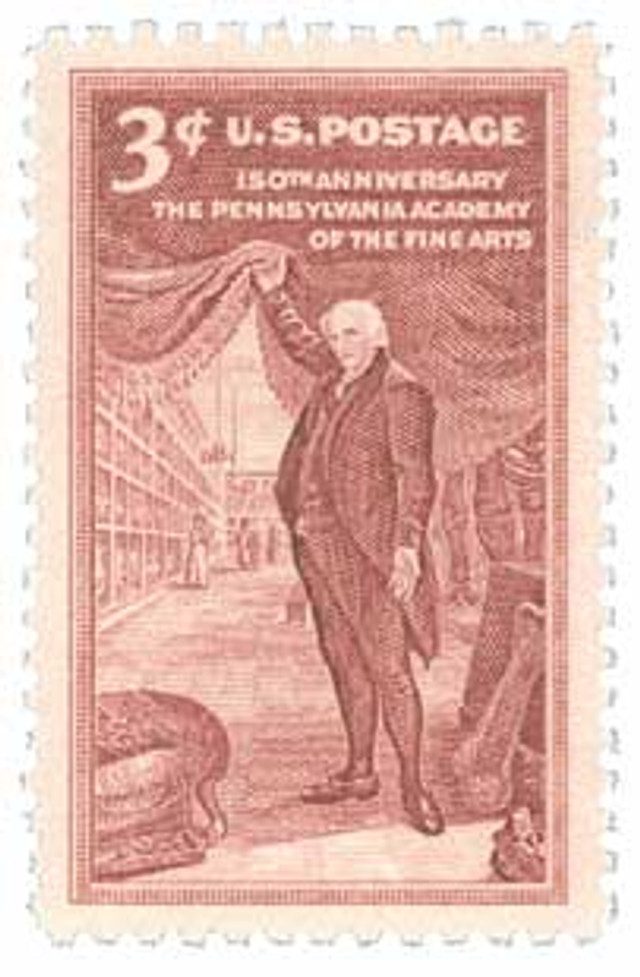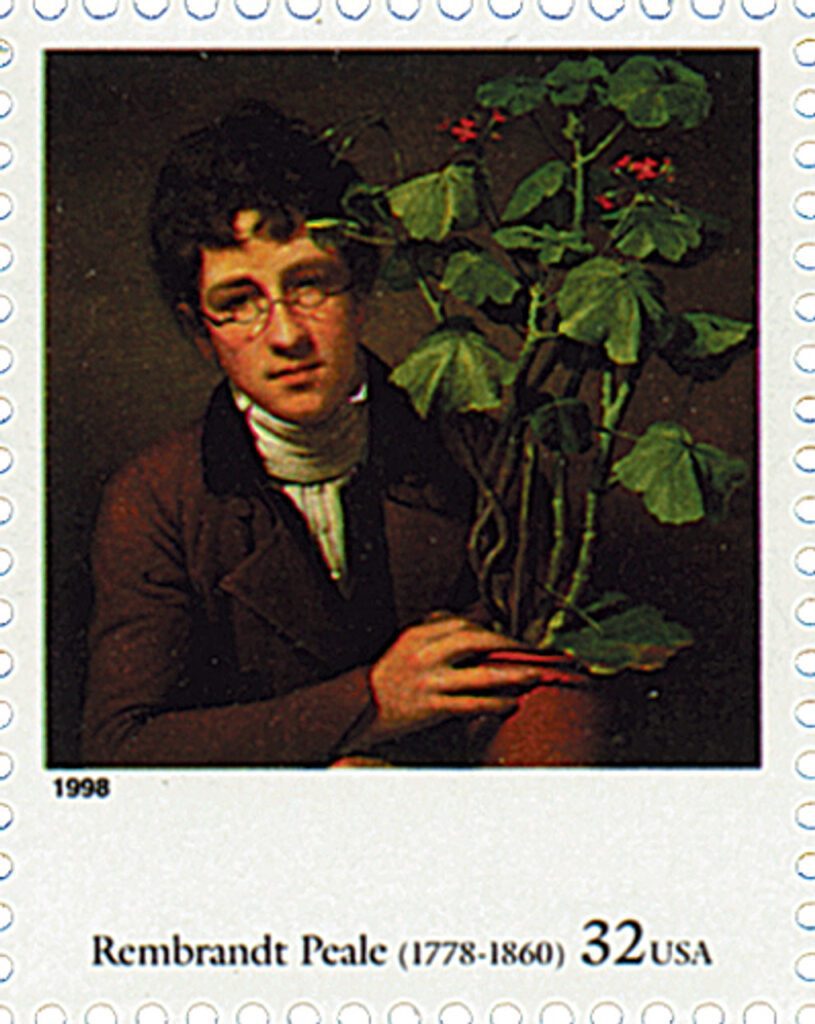Artist Charles Willson Peale was born on April 15, 1741, in Chester, Province of Maryland.
Peale’s father died when he was a child so he took an apprenticeship with a saddle maker when he was 13 years old. By the time he was 20, Peale had his own saddle shop and also worked as a watchmaker and silversmith.
Peale took an interest in art when John Hesselius offered to give him a few painting lessons in exchange for a saddle. Having accrued several debts, Peale started painting miniature portraits to make extra money. He began to seriously consider a career in art after meeting and receiving advice from portrait painter John Singleton Copley. Then in 1767 a group of friends raised money to send Peale to London to study art with American expatriate Benjamin West.
After studying with West for three years, Peale returned to the US and taught his younger brother James Peale, who also became a popular artist. The older Peale quickly became one of the most popular painters in the colonies and moved to Philadelphia in 1775 to support the Revolutionary movement. He helped to raise troops and served with the city’s militia during the Trenton-Princeton campaign, ultimately attaining the rank of captain. Even while in military service, Peale continued to paint, producing miniature portraits of several Continental Army officers that he would later repaint on a larger scale. After his military service Peale was part of the Pennsylvania state assembly before working as a painter full-time.
Over the years Peale painted some of America’s most significant historic personalities, including Benjamin Franklin, John Hancock, Thomas Jefferson, and Alexander Hamilton. But is he most widely known for his portraits of George Washington. He first painted Washington in 1772. Washington would sit for Peale six more times during his career. From these sittings, Peale produced nearly 60 portraits.
In addition to art, Peale was also interested in natural history and science. He even launched his own scientific expedition. Then Peale opened up his own museum in 1784, known as Peale’s American Museum or the Philadelphia Museum. Peale personally collected many of the museum’s artifacts, including several birds that he prepared himself. The museum was also the first to display a mastodon skeleton, which Peale proudly assembled with his son. Unfortunately, the museum eventually failed because he was unable to secure government funding.
However, Peale also founded another, more successful museum, the Pennsylvania Academy of Fine Arts. Peale and sculptor William Rush opened the museum in 1805. Today it is the oldest art museum and school in the nation. The museum would become world famous for its collection of 18th-, 19th-, and 20th-century American paintings, sculptures, and works on paper.
In addition to his art, Peale was an expert in several other fields including carpentry, dentistry, optometry, shoemaking, and taxidermy. He was also an inventor – he built an artificial arm, designed bridges, created an efficient “smoke eater” stove, and improved on other people’s inventions.
Peale generally retired in 1810 to his farm in Germantown, though he continued to paint and experiment with scientific farming. Over the course of his career, Peale painted about 1,100 portraits. He died on February 22, 1827.
Click here to see a collection of Peale’s work.
| FREE printable This Day in History album pages Download a PDF of today’s article. Get a binder or other supplies to create your This Day in History album. |
Discover what else happened on This Day in History.







